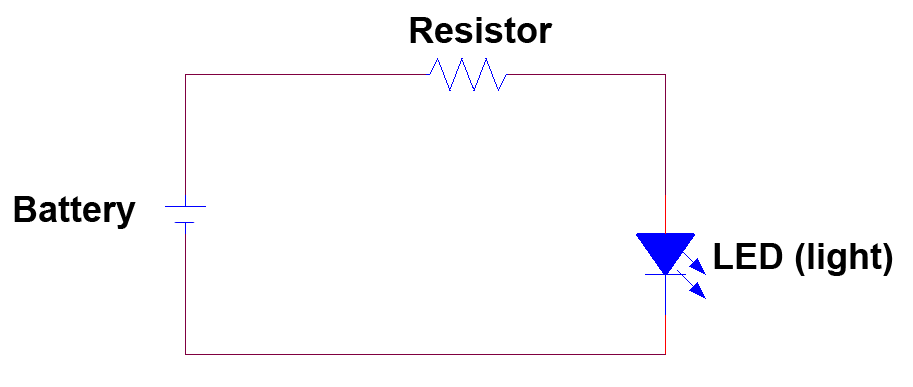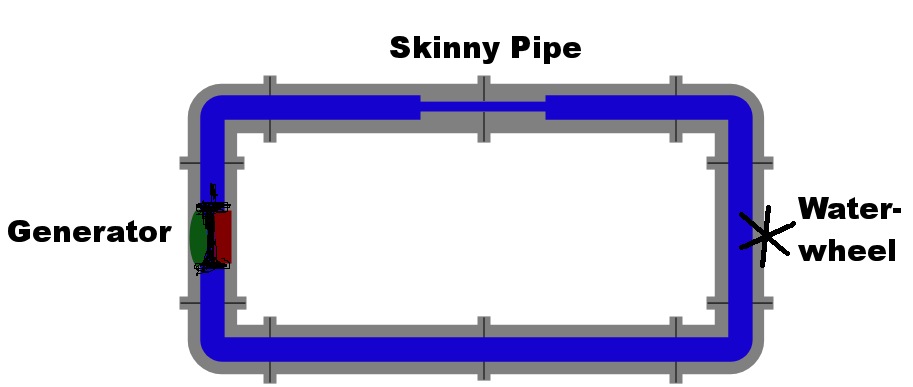During an electronics class, a student needed to use a resistor in a circuit to reduce the voltage to the rest of the circuit (the load). When he asked whether he should put the resistor at the beginning of the circuit (connected to the positive terminal) or at the end (connected to the negative), he was told it doesn’t matter.
To help envision why this is true, we’ll use the popular water analogy, where we imagine water flowing through pipes instead of electrons flowing through wires. Wider pipes which allow lots of water to flow through are analogous to wires with low resistance, while very skinny pipes are resistors. Lightbulbs can be replaced with anything that turns water flow into mechanical energy, such as a water wheel. Finally, batteries (voltage generators) can be replaced with a device that sucks water in one end and pushes it out the other (pressure generator).


With this analogy in mind, it’s easy to see why a resistor can be placed at the beginning or the end – placing a skinny pipe anywhere in our pipe-circuit causes the same decrease in flow in the entire pipe-circuit (and the same decrease in pressure across the ends of the pipe).
To see why this is, imagine a complete blockage in one of our pipes – this stops all the flow in the entire pipe-circuit, not just near the blockage, no matter how much pressure our pressure-generator is generating. When we create a tiny hole in the blockage, a small amount of water begins to flow through it. This is the flow circulating our entire pipe-circuit – you’ll measure this same amount of flow (liters/second) anywhere in the circuit. As we make the hole bigger, the flow becomes larger and larger until the blockage is completely removed, at which point the flow is instead limited by other factors (the size of our pipes and the pressure of our pressure-generator).
This pipe-circuit analogy can be extended in almost every respect. Water flow corresponds to current; water pressure to voltage; and power to… well, power. Capacitors are large water tanks, diodes are one-way pipes, and inductors are magic pipes that get smaller whenever the flow is changing and bigger again when it stops. Transistors are also three-way magic pipes whose maximum pressure is controlled by the pressure at the base. In fact, with only a few exceptions (the equations for resistance of a wire/pipe, the strange behavior of transistors in extreme conditions, and of course the inclusion of our magic pipes), the analogy is pretty much perfect.


2 Comments
The water analogy with various kinds of magic pipes sounds like the scenario for a fun pipe-based puzzle-solving game.
This is extremely helpful. Thank you so much!